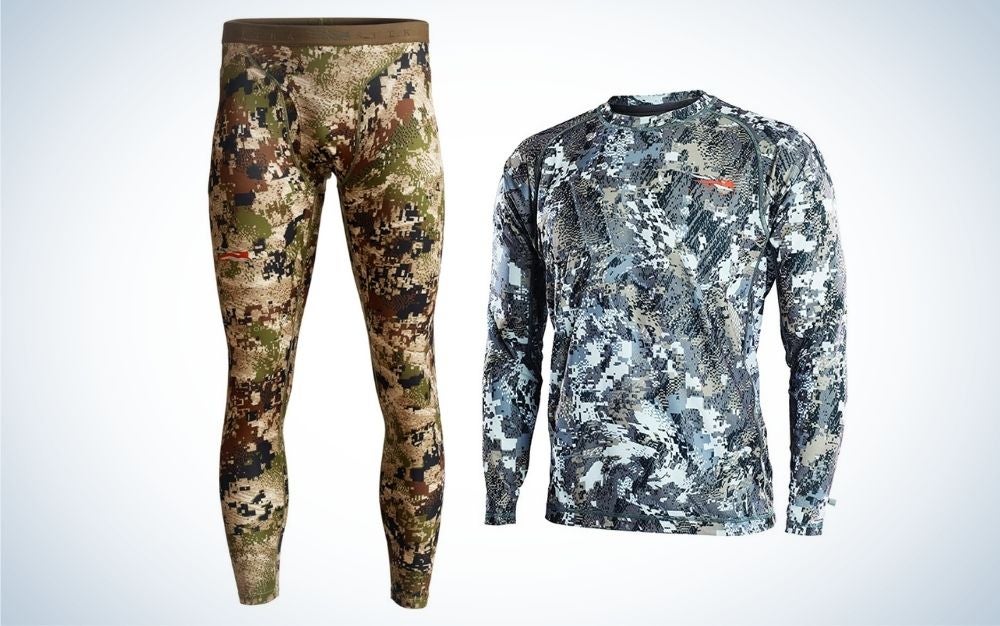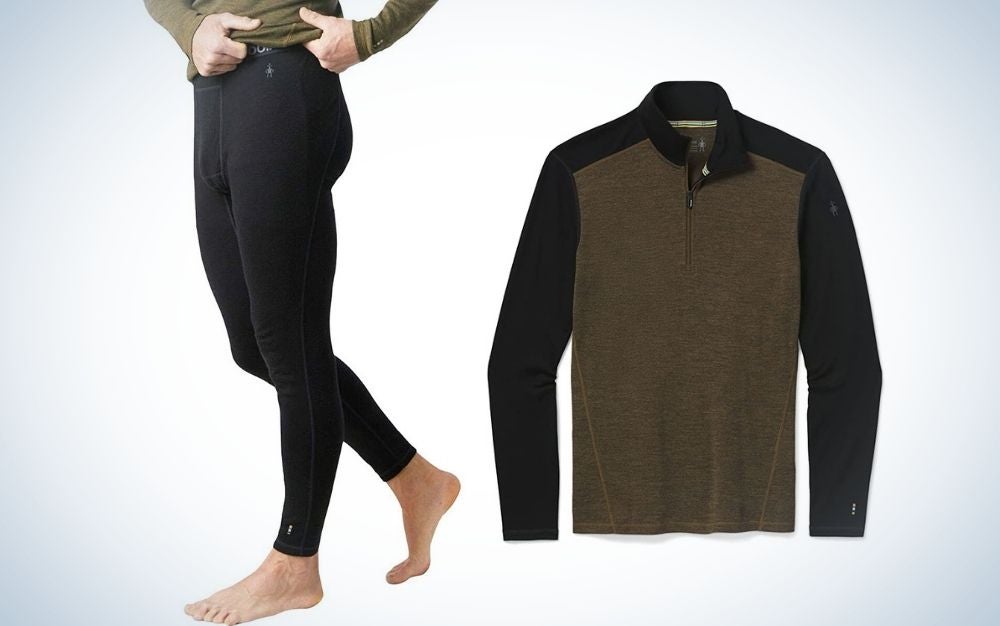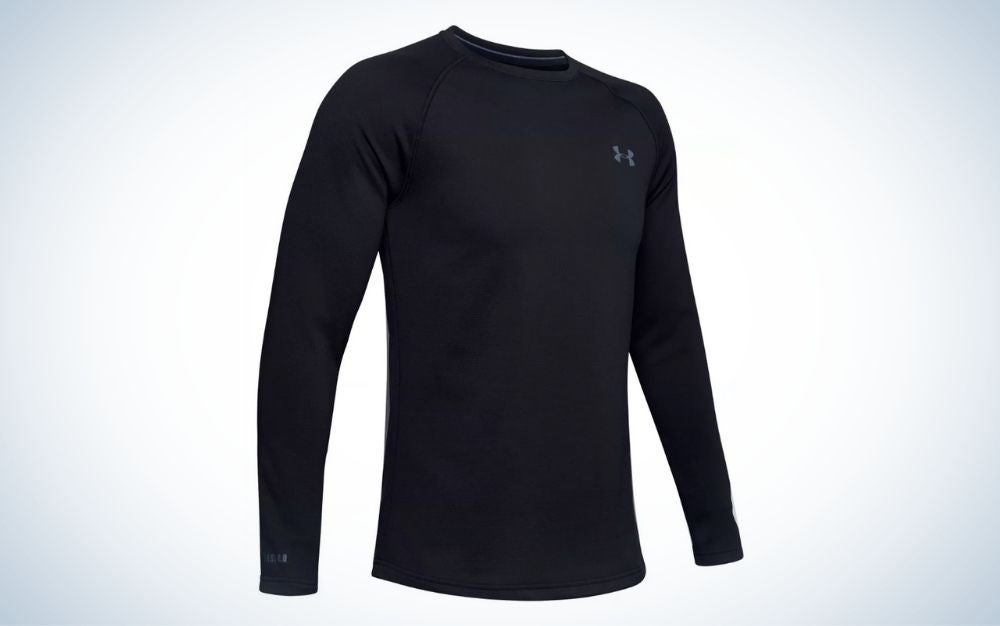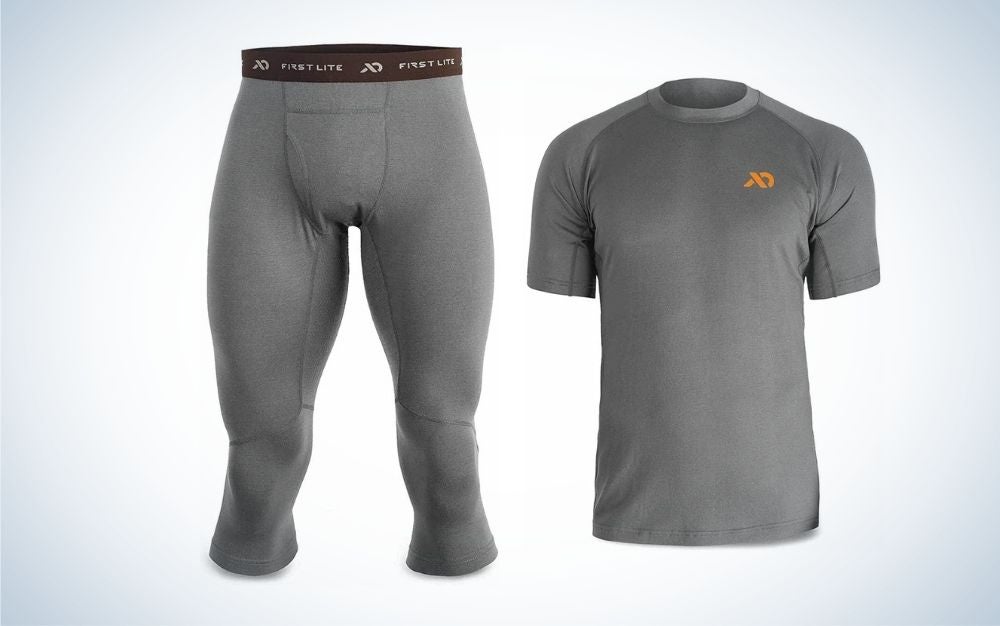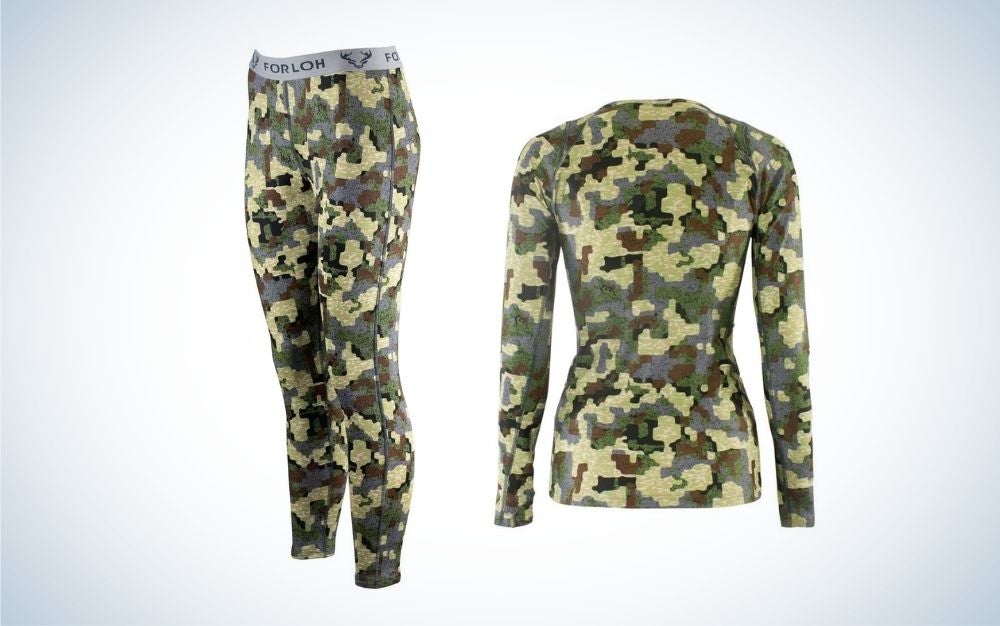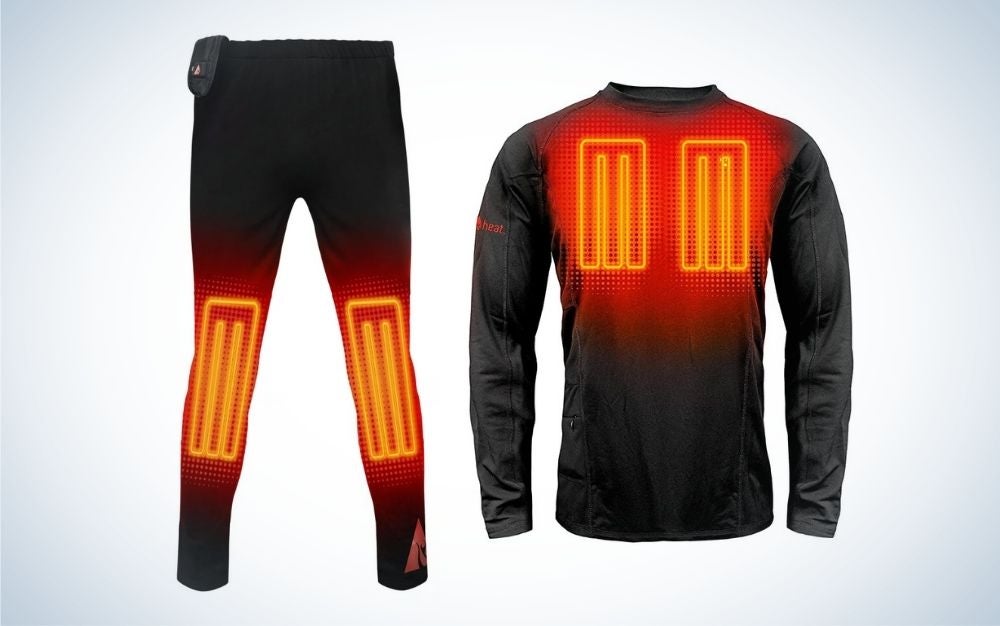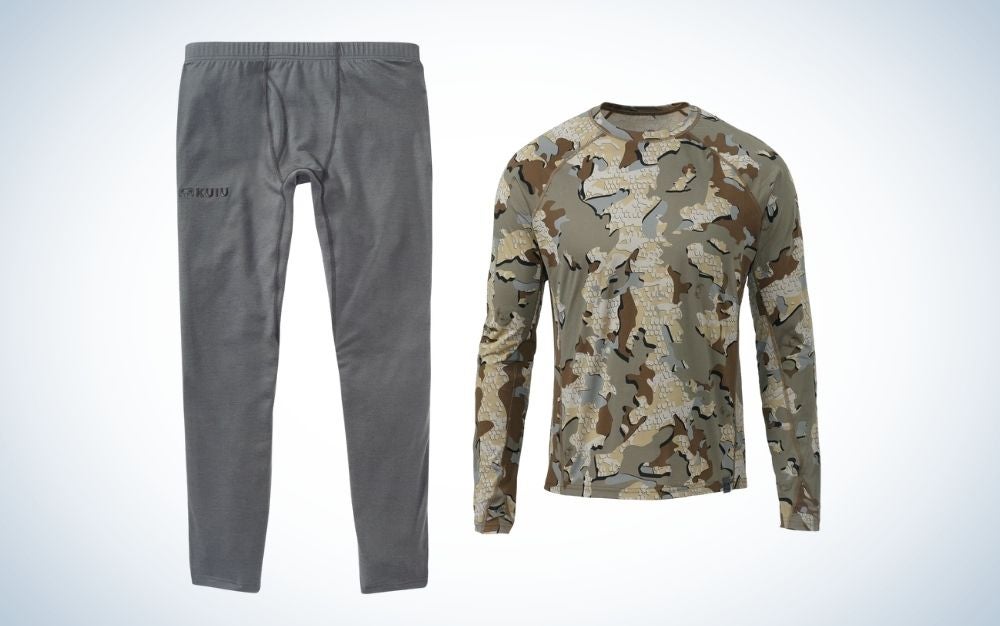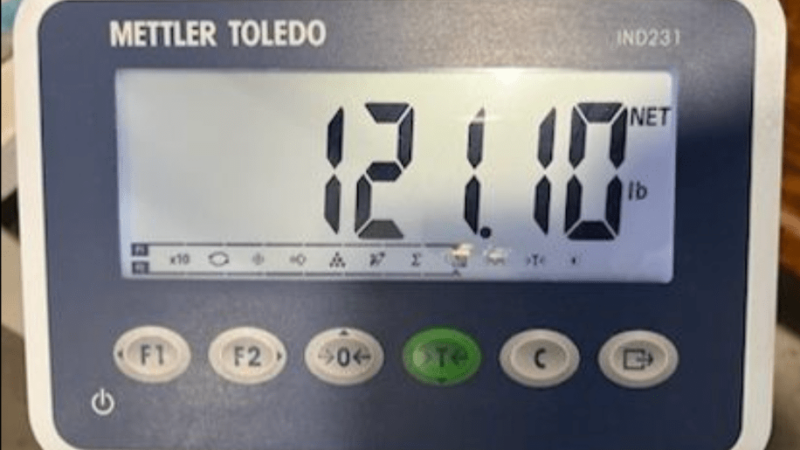The Best Base Layers for Hunting of 2023
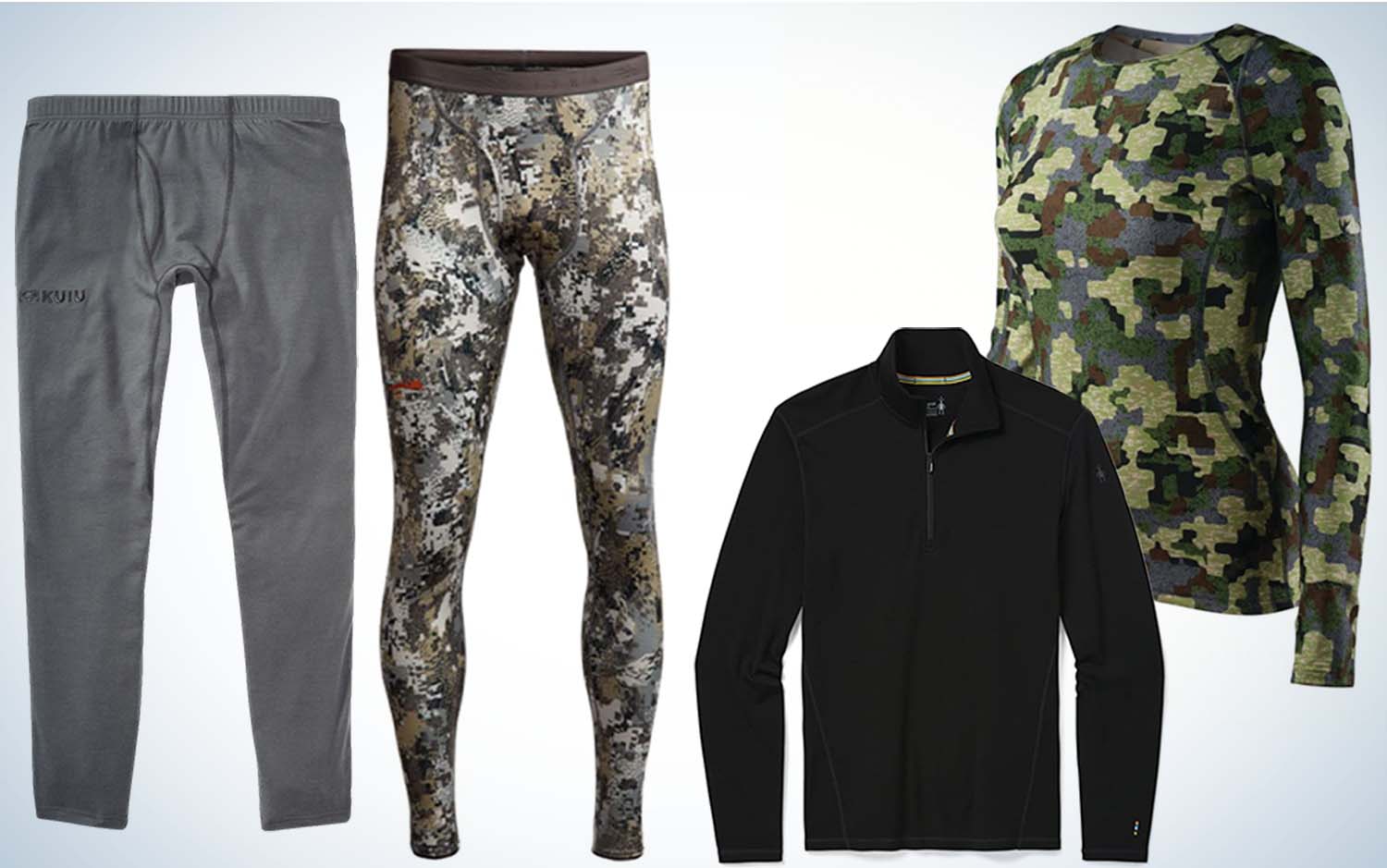
We may earn revenue from the products available on this page and participate in affiliate programs. Learn More ›
| Best Lightweight | 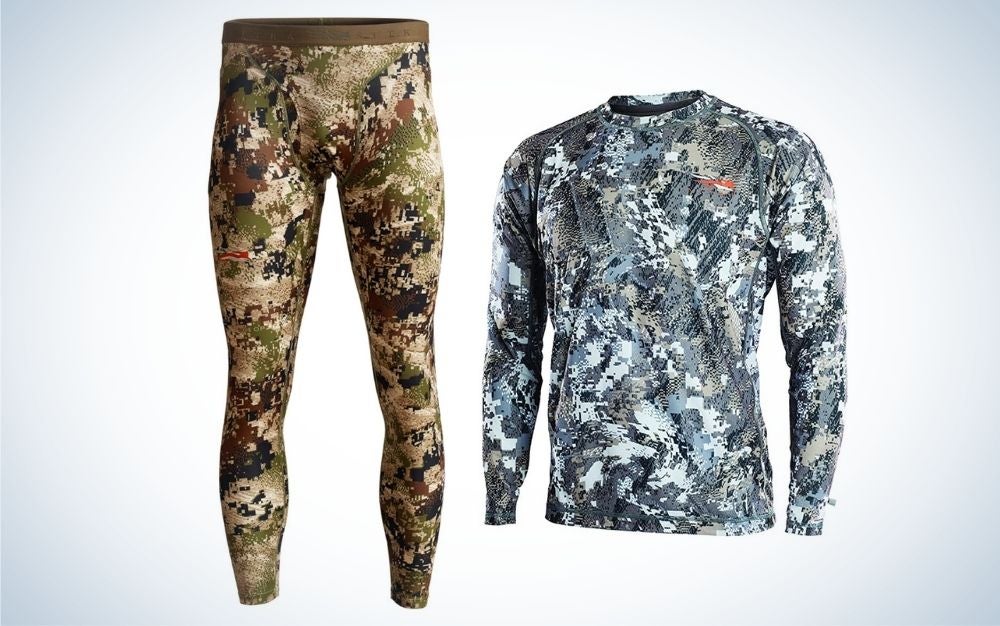 |
SITKA Core Lightweight Bottom & Top | SEE IT |
LEARN MORE
|
Summary
Lightweight and breathable excellent early-season options. |
| Best Merino Wool | 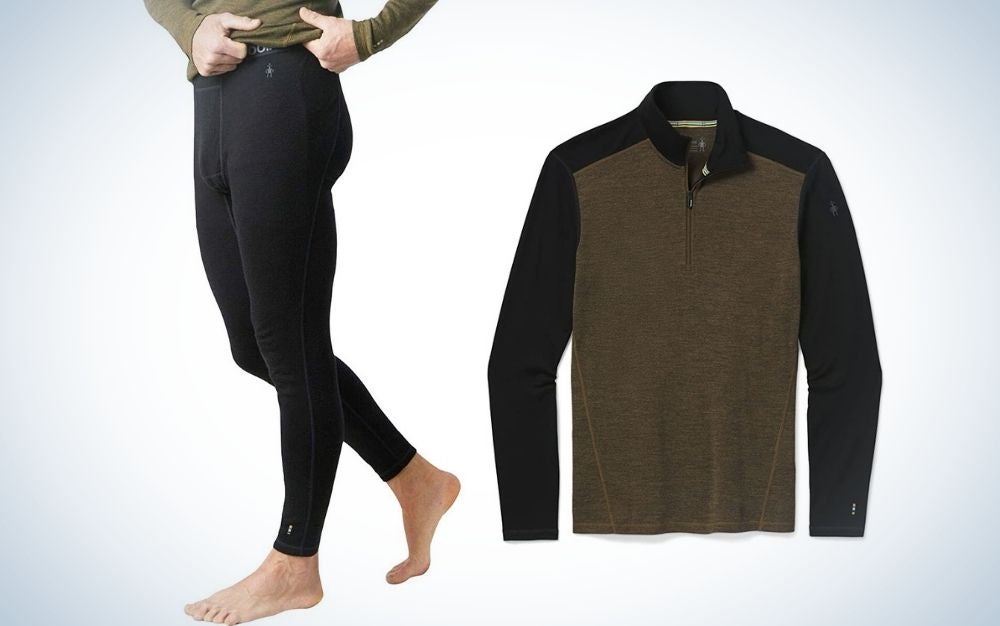 |
Smartwool Classic Thermal Merino Base Layer 1/4 Zip & Classic Thermal Merino Bottom | SEE IT |
LEARN MORE
|
Summary
Smartwool’s heaviest layer for the coldest conditions. |
| Best for Treestand Hunts | 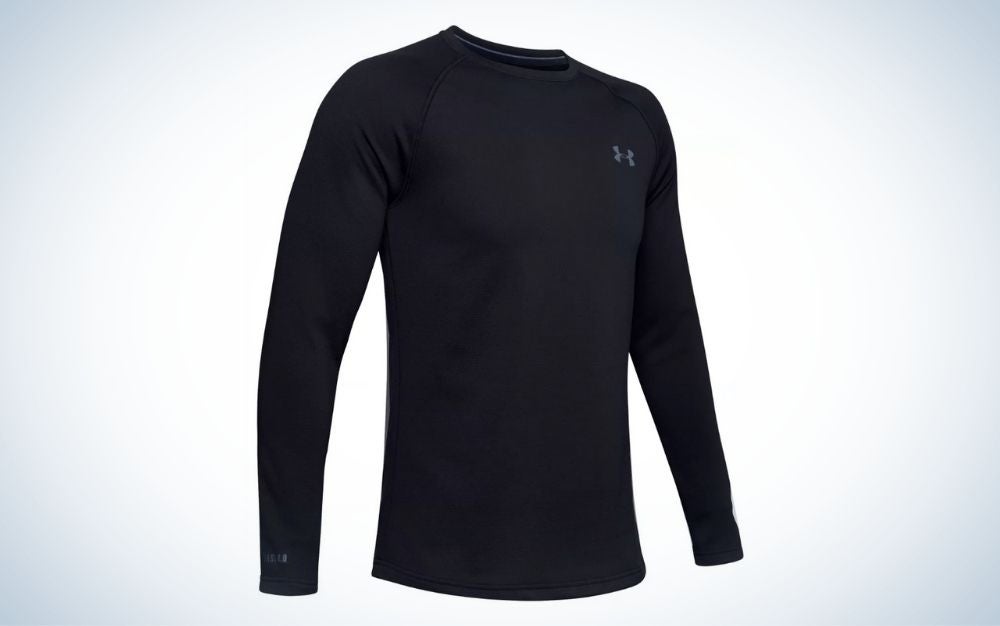 |
Under Armour ColdGear Base 4.0 | SEE IT |
LEARN MORE
|
Summary
A warm layer that’s perfect for stationary hunts. |
The base layers you need for hunting depend on the time of year you’re in the woods. When I chase elk in September, I use a lightweight base layer or a midweight that also doubles as a standalone piece. When the late season rolls around, I use a heavyweight base layer that’ll keep me warm on all-day sits in the deer stand or duck blind. It might not seem like the most important piece of gear, but base layers can make or break a hunt. But choosing a base layer doesn’t have to be complicated, and thankfully there are plenty of options to suit any hunting scenario you might encounter. I’ve tested these base layers on everything from a bighorn sheep hunt to frigid mornings in the duck blind. And while they all serve different purposes, each one makes a great option in its own category.
Not long ago base layers were referred to as thermals. There are plenty of absurd and hilarious photos hanging in hunting camps around the country with guys dressed in red coveralls with a button-up chest and single-button hatch over their rear ends. Then came the long johns, which mostly contained cotton. And in case you don’t know, cotton holds moisture and isn’t the best for warmth. But with price tags under $25, they were too cheap to pass up. When clothing kingpins like Under Armour finally started offering quality athletic apparel, almost overnight, great base layers began popping up. Base layers went from 70 and 80 percent cotton to polyester, Merino wool, and other quality materials that actually keep you warm and wick moisture. Today, the best base layers for hunting don’t just keep you safe—they keep you hunting longer.
- Best Lightweight: SITKA Core Lightweight Bottom & Top
- Best Merino Wool: Smartwool Classic Thermal Merino Base Layer 1/4 Zip & Classic Thermal Merino Bottom
- Best for Treestand Hunts: Under Armour ColdGear Base 4.0
- Best for Archery Elk Hunting: First-Lite Wick Short Sleeve Crew & Wick Boot Top Bottom
- Best for Women: Forloh Women’s Deep Space Base Layer Crew Long Sleeve & Bottom
- Best Heated: ActionHeat 5V Heated Base Layer Shirt & Pants
- Best Midweight: KUIU Peloton 118 LS Crew-T & Ultra Merino 145-Zip Off Bottom
How We Picked the Best Base Layers for Hunting
For this review, I tested each of these base layers in their designated environments and interviewed my wife on the Forlohs. You can read all the ink you want about a particular base layer, but it means nothing until you actually try it out. I’ve tested a lot of base layers over the years, and my favorite all-time base layers are UA’s ColdGear 4.0. I’ve had the top and bottom for five years and used them across the globe. And they’re a staple in my layering system every year.
Best Base Layers for Hunting: Reviews & Recommendations
Best Lightweight: SITKA Core Lightweight Bottom & Top
SITKA Gear
Key Features
- 100 percent polyester
- Sizes: S to 3X
- Permanent Polygiene Technology
- Comfort Stretch
Pros
- Lightweight
- Moisture-wicking
- Odor Control
Cons
- Expensive
When you’re covering lots of miles for an alpine muley or deep-timber bull in the early season, comfort is critical, and this base layer duo delivers it in spades. I tip my hat to the gusseted no-bunch crotch, and though not warm, the garments will keep the chill off during those crisp mountain mornings. Breathability is remarkable, and I rarely have to stop to drop these layers during the day’s hunt. The polyester build is bulletproof, dries quickly, and does a great job of wicking moisture away from the body, but the waistband doesn’t rub or tug. And the ankle-fit bottoms hold tight and won’t bunch up inside your pant leg. Also, at night when I slide the top and bottom off and snuggle into my sleeping bag, the duo is dry come morning and doesn’t smell like a gym bag.
This past year I finally drew a Colorado bighorn sheep tag after putting in my name for 19 years. The hunt started August 1, so temperatures were warm even before daylight. I hunted with these lightweight base layers, and they provided just the right amount of warmth and breathability when I made the most important bowhunting shot of my life.
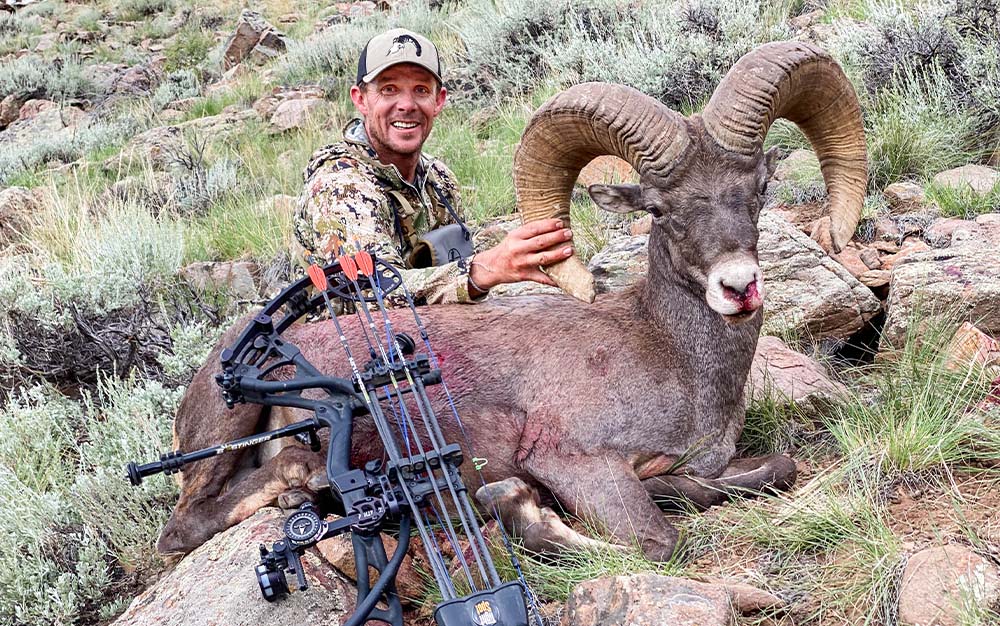
Best Merino Wool: Smartwool Classic Thermal Merino Base Layer 1/4 Zip & Classic Thermal Merino Bottom
Smartwool
Key Features
- 100 percent Merino wool
- Flatlock seam construction
- Interlock knit
Pros
- Shoulder panels on top
- Excellent moisture wicking
- Odor resistant
- Wear it as an outer layer in early season
Cons
- Almost too warm at times
I love Merino wool for mid-and late-season hunting, and this combo from Smart Wool is the best I’ve found. The 1/4-zip thermal top helps with venting, and though they offer a slim fit, these base layers aren’t skin tight. Some hunters don’t like the fit and feel of spandex, and if this is you, you’ll appreciate the semi-loose feeling. Smart Wool updated the fit of these garments to improve functionality while enhancing aesthetics. You can use this pair if you get mobile or sitting in a treestand, and you won’t get too hot or cold during either.
Best for Treestand Hunts: Under Armour ColdGear Base 4.0
Under Armour
Key Features
- 4-way stretch material
- 78 percent polyester/22 percent elasterell
- Extreme warmth
- UA scent control
Pros
- Soft against skin
- Traps body heat
- Lightweight
Cons
- Pricey
- Not great for mobile hunts
For years, this combo has been my go-to in the deer stand and duck blind. I love the fit and feel, and the 4-way stretch material moves incredibly well with the body. When you sit for extended periods of time blood flow slows throughout the body, reducing your body temp. But the 4.0 traps heat in, and when you wear them with a solid outer layer system, they’ll keep you in the elements for as long as you please. The material is easy to care for, wicks away moisture, and dries incredibly fast. Under Armour has made a name for itself by designing athletic clothing that serves a purpose, and this is the case with this icy weather base layer.
If I had to choose one base layer for waterfowl and stationary whitetail hunts, UA’s 4.0s are it. These garments have kept me warm on some of my coldest, dreariest days in the duck blind and tree stand, and I really appreciate the soft, brushed grid interior. They don’t just provide maximum warmth, they’re comfortable, and I feel like I’m wearing my favorite hoodie even in all-day hunts.
Best for Archery Elk Hunting: First-Lite Wick Short Sleeve Crew & Wick Boot Top Bottom
First Lite
Key Features
- Aerowool mesh panels
- Odor-resistant
- Wick Ultralight 150 Aerowool
- Weight: 5 ounces (bottoms)
Pros
- Designed for active hunts
- Excellent ventilation
- Comfort
- Odor control
Cons
- Pricey
- Not effective when temps drop
I’ve used this duo on a pair of September archery elk hunts, and they served their purpose well. They kept me warm during the cool mornings but not too warm as they day went on. The top works as a standalone garment, and the bottoms cut off just below the knee, so you don’t have to worry about them layering over your socks and getting too warm. The fit and feel are excellent, and both dry quickly thanks to 37.5 active particle technology. This duo seems to resist the stink factor, and you’ll appreciate the mesh panels placed in the crotch when you’re covering miles of rugged terrain each day. Both are designed for high output hunts in hot weather, and they exceed expectations. Not to mention, this is the same clothing that won “Alone” for Clay Hayes.
Best for Women: Forloh Women’s Deep Space Base Layer Crew Long Sleeve & Bottom
Forloh
Key Features
- Full body 4-way stretch
- Polygiene antimicrobial
- Trizar Yarn
- Made in the U.S.
- Polyester spandex blend
Pros
- Extreme warmth
- Form-fitting for women
- Odor reduction
Cons
- Pricey
My wife loves the 87 percent polyester and 13 percent spandex build, and she calls the bottoms “her comfort clothing for hunting and daily wear.” She notes that even though these are rated as midweights, they don’t get too hot when she moves around a lot during the early season or feel bulky and bunch up like others that she’s tried. One of her favorite things about these base layers is their versatility, and she uses the bottoms as workout pants, especially on early morning runs, frequently. So you can definitely use these as standalone pieces, and they have a 50+ UPF rating and come in multiple color and camo options.
Best Heated: ActionHeat 5V Heated Base Layer Shirt & Pants
ActionHeat
Key Features
- Power bank technology
- 4 LED indicators
- Polyester and spandex
- USB charging kit
Pros
- Super warm
- Durable
- User friendly
- Quick charge
Cons
- Heating times are not exact
- Expensive
When temps get nasty, and they can during late whitetail muzzleloader or waterfowl seasons, don’t count on standard base layers to keep you warm. I love this system because the 92 percent polyester and 8 percent spandex are ultra-comfortable, and if battery-operated heat isn’t necessary, this material blend keeps you plenty warm. The pants sport heat zones in the knee/thigh and backside/seat areas, and the top provides heat zones in the shoulders and back. Both garments, via hold touch-button control, are intuitive, and though heat run times seem a tad off from the manufacturer’s ratings, this is a must-have base layer combo for frigid weather.
You can also use the power bank that charges the heat zones to charge your phone or tablet. If you use the power bank to charge your devices, just know that the heat zone times will decrease. And if you’re wondering about maintenance, both garments are machine washable.
Best Midweight: KUIU Peloton 118 LS Crew-T & Ultra Merino 145-Zip Off Bottom
KUIU
Key Features
- Zip-off bottoms
- Toray Primeflex Top
- 90 percent Merino wool bottom
- Shirt: UPF 50+
Pros
- Shirt also doubles as a standalone
- Odor resistant
- Wicks moisture
- Durable
Cons
- Bottoms not performance fit
The Peloton 118 LS Crew is one of my favorite go-to baselayer tops. I’ve worn it as a standalone piece and under outer layer tops like hoodies, 1/4-zips, and light jackets. It’s a performance-fitting top, and it feels great against the skin and moves well. Unlike other top-end base layers, the stretch doesn’t come from spandex but from a material called Primeflex. Primeflex is a durable spiral yarn but doesn’t contain heavy, moisture-holding elastane fibers.
The pants, though not form-fitting, are some of the most comfortable base-layer bottoms I’ve ever worn. I’ve used them in a treestand, goose pit, and during October elk hunts. Even without a performance fit, they’re far from bulky. The full-length zippers makes taking them on/off easy, and the Merino wool provides incredible warmth and reduces odor. The waistband will remind you of your favorite pair of sweatpants. But overall, these bottoms are a must-have layer.
Things To Consider Before Buying Base Layers
It doesn’t matter if you have the best base layers on the market, if you don’t match them to the seasonal weather conditions you’ll encounter, you’ll either sweat or freeze to death. I dropped some serious coin on Under Armour’s late-season ColdGear base layers several years back because I was sick and tired of freezing during goose season. The addition of this top and bottom to my clothing arsenal proved life-changing, especially for cold winter weather. That September, during an archery elk hunt, I slid into those same base layers on the hunt’s first morning. By noon, I was drenched in sweat. By 2 p.m. my buddy lifted his wrinkled nose and asked, “What’s that smell?” I already knew.
Take it from me, unless you want the elk and your buddies to smell you from miles away, there isn’t one do-it-all base layer. If you hunt spring, summer, fall, and winter months, you’ll need ones suited for early, mid-, and late-seasons. Here are the best base layers for hunting that should cover any hunting situation and season you might encounter. Choosing the best base layers for your specific hunting needs might seem intimidating, but if you narrow down the conditions you’ll frequently encounter and what materials work best, then you’ve done most of the work.
Wool or Synthetic
Consider if you need a wool, synthetic, or blend of these two for your own scenario. Few materials are warmer than wool, and it will keep you toasty even when it’s wet. However, if you have irritable or sensitive skin, wool might make you itch, and it isn’t the best for moisture-wicking. And once wool gets wet, it takes a while to dry.
Synthetic base layers used to have a terrible reputation. Now, manufacturers have dialed in these materials, and I wear more synthetic base layers than wool or blends. I’m an active hunter, and I appreciate how modern-day synthetic base layers efficiently wick moisture and insulate. And most synthetic or blend base layers have odor-control technology. My SITKA Core Lightweights don’t smell fantastic after a 10-day elk hunt, but they don’t reek either.
Sun Protection
If you plan to use a base layer top as a standalone item, you need one with a decent UPF rating. Most base layers offer UPF 50+ protection, which is necessary for a lot of environments, including the open country. If you’re hunting the early season or conditions where you might have to layer-down, make sure your base layers have adequate sun protection.
FAQs
Q: Should base layers be tight or loose?
A custom-fit is essential when you’re looking for a suitable base layer. Base layers don’t have to be skin tight like spandex, but they shouldn’t be super loose either. A solid form fit that’s comfortable and not restrictive is the best way to go. My favorite base layer system is Under Armour’s ColdGear. The build is roughly 80 percent polyester and 20 percent Elastarell, and it keeps me warm, dry, and comfortable without feeling bulky or restricting my movement.
Q: What’s the difference between base layers and thermals?
The only real difference between the two is that some base layers can be worn as standalone clothing, while thermals are considered as strictly underwear. Thermals are more like what your grandpa probably wore—a red coverall type with a single-button butt. Today’s base layers come in different designs and fabrics to better suit hunters in the various climatic conditions they will encounter.
Q: How much do hunting base layers cost?
While hunting turkey in Nebraska this spring, I bought a base layer set for $14. It was terrible — nothing more than a long-sleeve shirt and paper-thin pants, and it was better than nothing but not much. Like most products, you get what you pay for. A top-end base layer top will typically run between $50 and $80. Bottoms, because they require more material, go between $80 and $160. The price range depends on the manufacturer. Some outdoor brands are more prestigious than others. But the biggest reason for the fluctuation is the difference in the amount of material that goes into either a lightweight early-season base layer or a late-season heavyweight base layer.
Why Trust Outdoor Life?
Since 1898, OL has been a leading authority in testing and reviewing hunting gear, fishing tackle, guns and shooting equipment, and much more. We have more than a century-long history of evaluating products, and we’re now bringing that expertise to online reviews. Our editors are experienced outdoorsmen and women, and most importantly, we’re trained journalists. We prioritize field testing and objective data when reviewing products. We conduct interviews with gear manufacturers and engineers as well as outdoor experts so that our readers have an understanding of how and why a product works—or doesn’t.
Advertising does not influence our gear reviews and it never will. While we always focus our coverage on standout products—because we want our readers to be aware of the latest and greatest gear—we also cover the flaws and quirks of any given product.
Final Thoughts
From the early season to the late season, you need the best base layers for hunting the specific climate and weather conditions you’ll encounter. Having multiple might seem like overkill, but when your base layers keep you in the field longer you’ll be glad you invested in them.
- Best Lightweight: SITKA Core Lightweight Bottom & Top
- Best Merino Wool: Smartwool Classic Thermal Merino Base Layer 1/4 Zip & Classic Thermal Merino Bottom
- Best for Treestand Hunts: Under Armour ColdGear Base 4.0
- Best for Archery Elk Hunting: First-Lite Wick Short Sleeve Crew & Wick Boot Top Bottom
- Best for Women: Forloh Women’s Deep Space Base Layer Crew Long Sleeve & Bottom
- Best Heated: ActionHeat 5V Heated Base Layer Shirt & Pants
- Best Midweight: KUIU Peloton 118 LS Crew-T & Ultra Merino 145-Zip Off Bottom
The post The Best Base Layers for Hunting of 2023 appeared first on Outdoor Life.
Articles may contain affiliate links which enable us to share in the revenue of any purchases made.
Source: https://www.outdoorlife.com/gear/best-base-layers-for-hunting/
